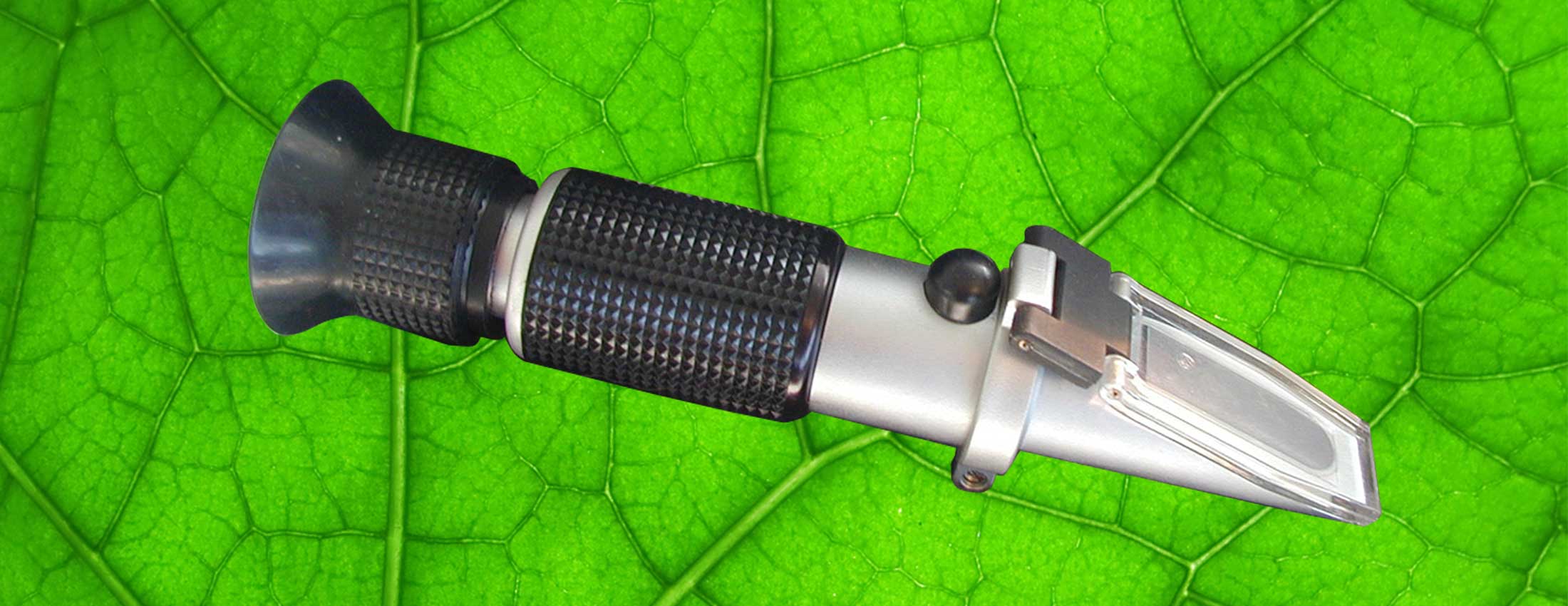Ten Reasons to Own A Refractometer

A refractometer is an invaluable pocket tool that measures dissolved solids in plant sap. Leaf tissue is balled up and rolled between the hands until green pigment is released. It is then placed inside the well of a garlic crusher and juice (plant sap) is expressed. A few drops of sap are placed on the screen of this device and it is held up to the light like a small, sawn-off telescope.
The reading is called brix and is measured in degrees. A good brix level is above 12 degrees for most crops, although this “ideal” drops down to 8 degrees for root crops. You are effectively measuring nutrient density in the plant and this includes sugars, amino acids and minerals. This is also a guide to your proficiency as a chlorophyll manager (the central role of a grower) and to the photosynthetic potential of the crop. Photosynthesis determines 95% of crop production. Here are ten reasons that you might choose to invest in this monitoring tool.
-
This tool offers an inexpensive insight into yield potential and crop quality.
-
It also indicates the likelihood of pest and disease pressure. i.e, the lower the brix level the higher the likelihood of insect attack or fungal disease.
-
High brix crops will have greater specific gravity, higher nutritional value and will contain low levels of toxic nitrates. Nitrates always enter the plant with water and there is an associated dilution of other nutrients. High nitrates always mean low brix levels and increased pest pressure.
-
Crops with a good brix level are less likely to suffer frost damage as the higher the plant sugars the lower the freezing point.
-
A refractometer can be used to monitor calcium levels in your crop. Calcium is the most important mineral in high production agriculture. A fuzzy line when looking into the viewfinder is indicative of good calcium levels while a sharp, distinct line means a lack of this important mineral.
-
Boron levels can also be monitored with this invaluable tool. Boron governs the trapdoor which opens to allow translocation of sugars from the chloroplasts to the roots each evening. Brix levels must always be lower in the morning than in the late afternoon. If morning and afternoon readings are similar then you are lacking the boron required to facilitate sugar transfer and a boron foliar spray will be very productive.
-
Brix levels should be the same throughout the plant. If there is significant variation then you have uncovered a nutrient imbalance that requires further investigation.
-
Weeds should always have a lower brix level than your crop or they will be problematical in that crop. If weeds have a higher brix than your crop there is a problem with mineral balance in your soil.
-
Foliar programs can be determined with a refractometer. Several one square metre patches can be sprayed with different foliars at representative rates. The foliar formula that produced the biggest brix increase within a 40 min period is the foliar that will be most productive in your crop. Use your refractometer to remove the guess work!
-
Your refractometer can be used to predict and prepare for damaging storms. If brix levels suddenly fall in the middle of the day the plant is pumping sugars down to the roots in preparation for an extreme weather event. Plants have a barometer-like capacity to enable them to rapidly boost the sugar reserves in the roots which can fuel the rebuilding process following storm damage.
For more information, or to place your order for a refractometer, please contact NTS on +61 7 5472 9900 or sales@nutri-tech.com.au.